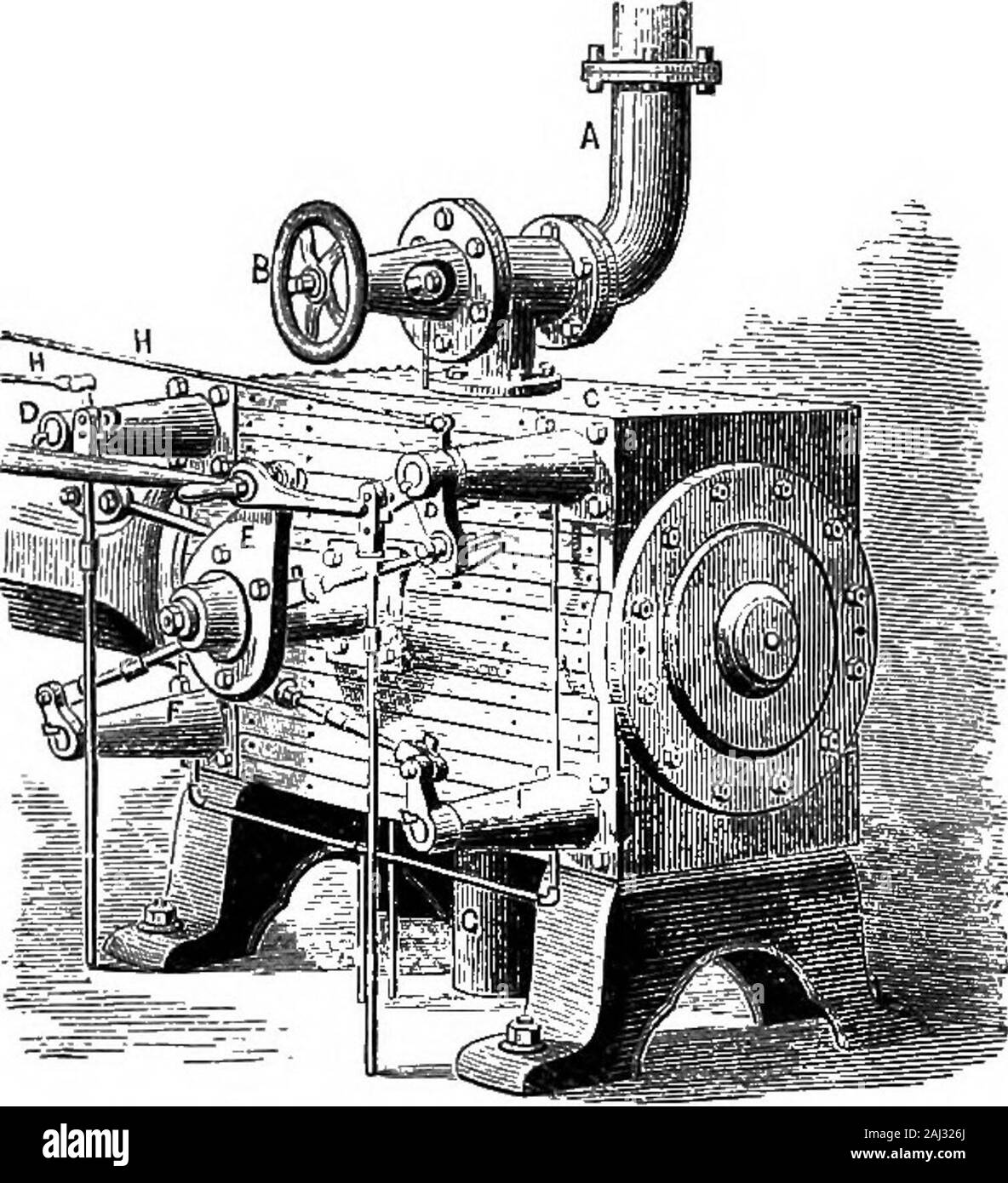A history of the growth of the steam-engine . Fig. 97.—Corliss Engine. horizontal steam-cylinder is bolted firmly to the end of theframe, which is so formed as to transmit the strain to themain journal with the greatest directness. The frame car-ries the guides for the cross-head, which are both in thesame vertical plane. The valves are four in number, asteam and an exhaust valve being placed at each end of theeteam-cylinder. Short steam-passages are thus secured, and 320 THE STEAM-ENGINE OP TO-DAT. this dimimition of clearance is a source of some economy.Both sets of valves are driven by an e

Image details
Contributor:
The Reading Room / Alamy Stock PhotoImage ID:
2AJ326JFile size:
7.1 MB (472.6 KB Compressed download)Releases:
Model - no | Property - noDo I need a release?Dimensions:
1509 x 1656 px | 25.6 x 28 cm | 10.1 x 11 inches | 150dpiMore information:
This image is a public domain image, which means either that copyright has expired in the image or the copyright holder has waived their copyright. Alamy charges you a fee for access to the high resolution copy of the image.
This image could have imperfections as it’s either historical or reportage.
A history of the growth of the steam-engine . Fig. 97.—Corliss Engine. horizontal steam-cylinder is bolted firmly to the end of theframe, which is so formed as to transmit the strain to themain journal with the greatest directness. The frame car-ries the guides for the cross-head, which are both in thesame vertical plane. The valves are four in number, asteam and an exhaust valve being placed at each end of theeteam-cylinder. Short steam-passages are thus secured, and 320 THE STEAM-ENGINE OP TO-DAT. this dimimition of clearance is a source of some economy.Both sets of valves are driven by an eccentric operating adisk or wrist-plate, E (Fig. 98), which vibrates on a pin pro-jecting from the cylinder. Short links reaching from thiswrist-plate to the several valves, D D, FF, move them with. Fio. 98.—CorKss Engine Valve-Motion. a peculiarly varying motion, opening and closing them rap-idly, and moving them quite slowly when the port is eithernearly open or almost closed. This effect is ingeniouslysecured by so placing the pins on the wrist-plate that theirline of motion becomes nearly transverse to the direction ofthe valve-links when the limit of movement is approached.The links connecting the wrist-plate with the arms movingthe steam-valves have catches at their extremities, whichare disengaged by coming in contact, as the arm swingsaround with the valve-stem, with a cam adjusted by thegovernor. This adjustment pennits the steam to follow thepiston farther when the engine is caused to slow down, and thus tends to restore the proper speed. It disengagesthe steam-valve earlier, and expands the steam to a greater STATIONARY ENGINES. 321 extent, when the engine begins to run above the properspeed. When the catch is thrown out, the valve is closedby a weight or a strong spr